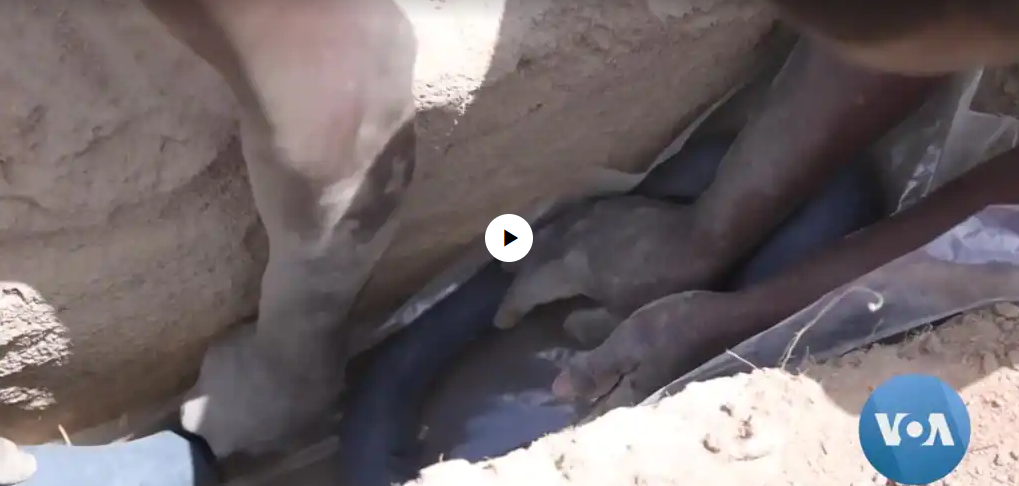Increasingly severe droughts in Africa make it very hard to grow food, especially in the dryer areas of the continent. But a water system developed in the United States is helping improve crop production in drought-affected areas.
The system involves plastic membranes that look like clear covers. When put in the ground, they prevent the loss of water and other healthful substances from the soil.
The technology has so far been tested in Zimbabwe and Kenya and has been performing well.
In the village of Ulilinzi of southeastern Kenya, the sandy soil has made it nearly impossible to produce a lot of crops. The problem is made worse by droughts. But the new water retention technology is giving farmers here new hope.
Alvin Smucker is a professor of soil biophysics at Michigan State University. He developed the water system.
“We had a lot of government funding, going into millions and millions of dollars to put all these systems together and then test it in Texas, Arizona, California and Michigan,” he said.
“This is not something that we just put a little container in the backyard — my backyard — and now we are saying it is the best in the world. It has been tested,” he said.
Shem Kuyah is a researcher at the Jomo Kenyatta University of Agriculture and Technology. He is one of the scientists leading the testing of the technology in Kenya. He said the membranes were tested on farms that grow cowpeas and corn.
“We realized that farms where we had installed these membranes were more productive,” he said.
Florence Mutisya is a farmer there. She has tried the technology at her farm.
“I saw the benefits,” she said. “And I can say that this technology is working very well because now, I get [a] good harvest.”
Ulilinzi farmer Anne Mutunga agrees.
“The technology is very good,” she said, adding, “we have vegetables which you can’t find anywhere else around here.”
Sylvia Nyawira is a researcher at the International Center for Tropical Agriculture, one of the organizations leading testing in the sub-Saharan area. She said the retention technology could help crop growth over a long time period.
“If farmers continue to retain their crop residues in the soil…there’s buildup of organic matter,” she said. “So, even in five years to come, the yields that we have been witnessing in plots that have the technology are expected to be much higher.”
Apart from improving crop production, experts say the technology can also help reduce the effects of climate change.
“As you increase productivity, the crops are able to take carbon from the atmosphere and fix it into their biomass,” Kuyah said. “You are able to lock it into the soil.”
However, the new water retention technology has a high cost and requires a lot of labor. It costs as much as $2,000 to buy the membranes to cover one hectare of land.
I’m Caty Weaver.
Juma Majanga reported this story for Voice of America. Dan Novak adapted it for VOA Learning English.
___________________________________________________________________
Words in This Story
drought — n. a long period of dry weather
membrane — n. a thin soft flexible sheet or layer especially of a plant or animal part (as a cell, tissue, or organ)
retention — n. the act of retaining : to keep in possession or use
benefit — n. something that does good to a person or thing
residue — n. whatever remains after a part is taken, set apart, or lost or after the completion of a process
yield — n. the amount or quantity produced or returned
biomass — n. plant materials and animal waste used especially as a source of fuel
